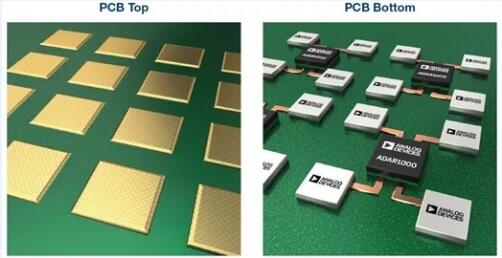The transition from FR-4 PCB materials to higher performance materials is often not as simple as one might think. When a shift becomes apparent, there may be many unexpected issues that need to be addressed. Some of these problems may be related to circuit design, and some may be related to PCB manufacturing process.
Due to the loss of circuit performance, the transition from FR-4 PCB materials to high frequency PCB materials is necessary. For a specific circuit, the amount of acceptable insertion loss may vary depending on the application. The loss of materials is classified by loss factor (DF), which is quite subjective for low-loss, medium-loss and high-loss materials. Based on experience, this article classifies them as follows: High-loss materials have DF values of 0.015 or higher, which is a common value for many FR-4 materials; some high-performance FR-4 materials have lower losses, some of which have DF values of 0.010 , these materials are classified as medium loss materials; the DF value of low loss materials is usually below 0.004; the DF value of extremely low loss materials is 0.002 or less. There is a gray area between low- and medium-loss materials with a DF range of 0.004-0.010.
In addition to the difference in losses, switching to high-frequency materials may require significant design changes. These changes are primarily due to the dielectric constant (DK) of the FR-4 material being approximately 4.2-4.5, while many high frequency laminates have very low DK values. Changes in DK may cause impedance differences, so the wiring layout often needs to be changed in the design. Additionally, the thickness of FR-4 laminate may not vary with the expected thickness of the laminate to maintain the desired thickness of the laminate.

Another issue relates to the PCB manufacturing process. Some high-frequency materials are PTFE-based and may require different processing parameters than FR-4 materials.
There are other contributing factors to FR-4. Due to the needs of the high-frequency industry, the DK tolerance of most high-frequency materials is stricter than FR-4, and the thickness control of the substrate is also stricter. These tightly controlled laminate properties are highly advantageous for building controllable impedance boards with narrow impedances. Additionally, high frequency materials typically have very low hygroscopicity, which for some applications may be more important for performance gains than the material's lower DF. Additionally, high-frequency materials are typically made with a low temperature coefficient of dielectric constant (tcdk), which is a measure of the change in DK with temperature. For some applications, tcdk may be more important than losses, which is another reason to use high frequency laminates.
Fortunately, new PCB materials are constantly being developed, many of which are bridges between FR-4 PCB materials and high-frequency PCB materials. For example, Rogers kappa 438 Gamma has many properties similar to FR-4 while offering many of the advantages associated with high frequency materials. Its DF value is 0.005, which is no lower than true low-loss materials, but compared with medium-loss or high-loss FR-4 materials, the loss is significantly improved. Kappa 438 Gamma was developed to have the same DK as many commonly used FR-4 materials, with a DK of 4.38, meaning it can be used without major changes to the circuit design when replacing FR-4. Additionally, its DK tolerances are tighter than most FR-4 materials, with an accuracy of ±0.05. Kappa 438 Gamma has a CTE within the advanced PCB structure range and can use the same process as FR-4.
Of course, for PCB structures, when switching to any different material, it is recommended that PCB manufacturers optimize the material process in each specific structure. But the good news is that if you have to switch from FR-4 to high-frequency, low-loss materials, there are still many circuit board materials for technicians to choose from.
To learn more about Rogers kappa 438, please click: Rogers third generation hydrocarbon resin ceramic pcb material kappa 438.